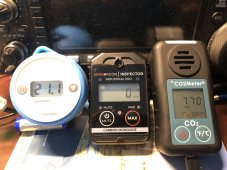Thoughts, in no particular order:
I share the emergency reliability concerns as well. Having power isn't a "would be nice" type of thing for me, it's a medical necessity in my family. When we need power, we NEED power.
I take responsibility for my own safety. I check my own air pressure in my car tires, I don't drink motor oil, and I won't run a generator in my living room. I'll accept that responsibility, in exchange for knowing I won't have an end-of-life sensor shut my generator down when it's desperately needed.
That said, I'd prefer the sensor bypass be reversible. Eventually I'll be selling this generator, and will re-activate the sensor before I do so. Don't want to be liable if some mental defective does run the generator in their living room, and kills their whole family, thinking the sensor will save them.
I wouldn't run ANY engine for 25 hours on break-in oil. A few hours, tops.



